Running a marathon is a dream for many people, and the World Marathon Majors (WMM) is the pinnacle of the sport. If you’re a marathoner, or if you just love to run, then the WMM is the ultimate challenge.
The WMM (World Marathon Major) is a series of six marathons held in six major cities around the world each year. The events are over six consecutive months and are widely considered the most prestigious marathons in the world.
Whether you’re a seasoned marathon runner or are just starting, this guide will provide you with all the information you need to know about the World Marathon Majors.
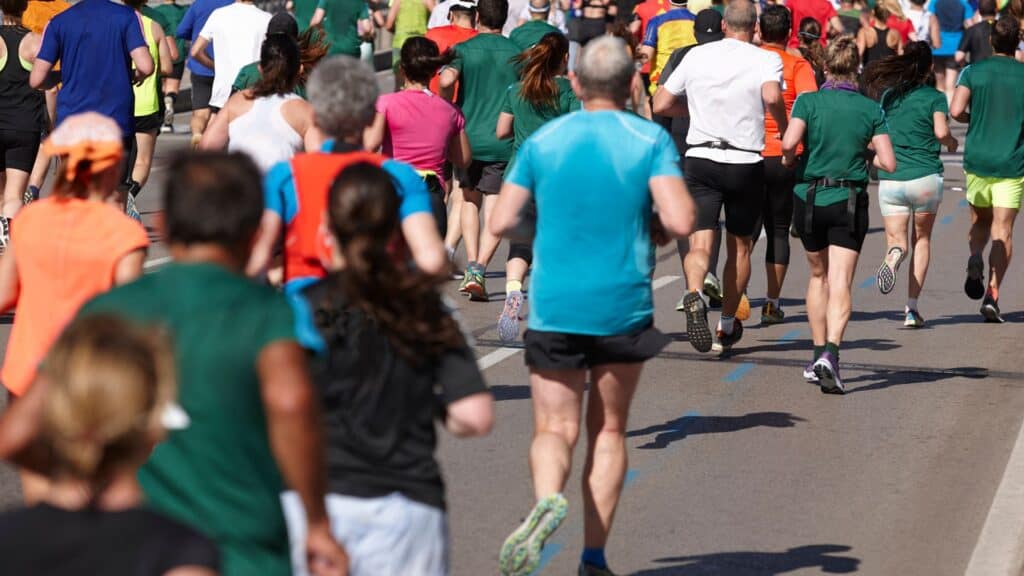
What Are The World Marathon Majors?
The six events that make up the World Marathon Majors are the Boston Marathon, Tokyo Marathon, London Marathon, Berlin Marathon, Chicago Marathon, and New York City Marathon.
These six events are held in different cities throughout the world, and runners who complete all six marathons receive special honors, the Six Star Medal. If you’re planning to participate in any of the races, we’ll unpack everything you need to know about each Major.
When Is Each Major Marathon Held?
Each race is typically held on the same weekend each year.
- Boston Marathon
The Boston Marathon, one of the oldest and most prestigious marathons in the world, takes place annually on the third Monday in April, a public holiday in Massachusetts.
Also known as “Marathon Monday,” this race marks the Patriots’ Day celebrations, commemorating the start of the American Revolution. As of now, the Boston Marathon is all set to take place on April 20th, 2026.
I have had the privilege of doing this race twice in 2013 and 2023, if I could pick one to do every year, this would be it.
- London Marathon
The London Marathon is the largest fundraising event globally, raising a record £66.4 million (US $83.7 million) in 2019. Usually takes place on a later Sunday in April. The 2026 TCS London Marathon Edition will take place on April 26th, 2026.
I am lucky to have done 1 of these, a humbling experience and you will love the crowds.
London Marathon Route: The ESSENTIAL Course Guide
- Tokyo Marathon
The Tokyo Marathon is yet another significant and very well-known marathon that is held annually in the capital city of Japan, usually on the first Sunday in March. The Tokyo Marathon is the largest in Asia, attracting almost 40,000 runners annually. In 2026, the race is set to take place on March 1st, 2026.
Tokyo Marathon and London Marathon rank as the 2 hardest to get into, so if you aspire to get all six, start applying for these 2 from the get-go and take your opportunity when it comes.
- Berlin Marathon
The Berlin Marathon is a flat and fast race and is considered one of the best events for runners to achieve a personal best. It’s traditionally held on the last Sunday in September.
- New York City Marathon
The New York City Marathon takes place annually on the first Sunday of November, attracting over 50,000 runners from around the globe. Happening on Sunday, 2 November 2025
My second major and privileged to be able to take my father to do his 1st international marathon. This is a fantastic event with great crowds and unique personalities in each borough.
New York City Marathon Route: The ESSENTIAL Course Guide
- Chicago Marathon
The Chicago Marathon is one of the three North American races included among the six world majors. Generally, this marathon gets held on the first or sometimes the second Sunday in October, taking the place of the annulled Bank of America Chicago Marathon. The 2025 Chicago Marathon is set for October 12, 2025, as it marks the race’s 47th rendition.
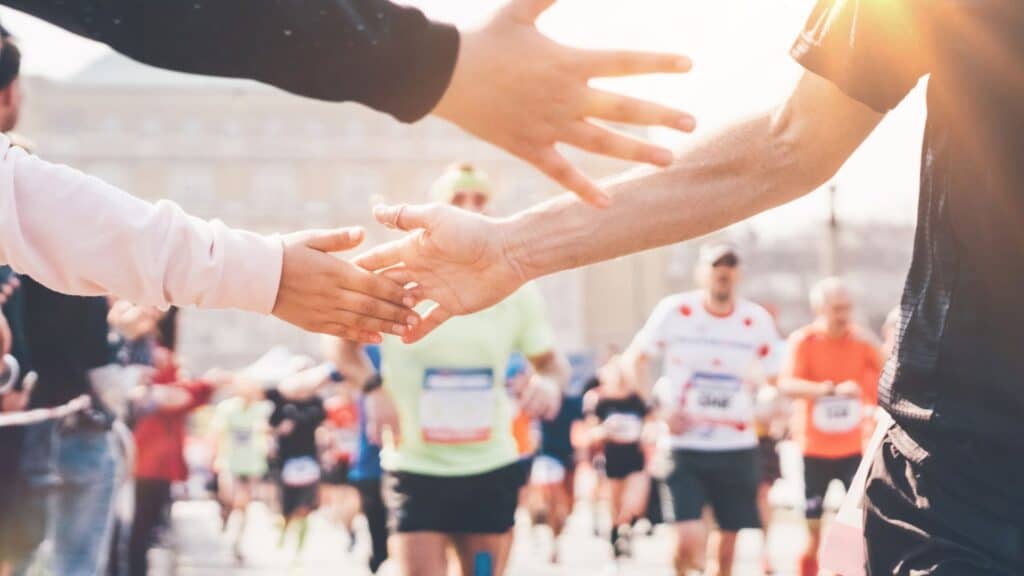
How To Run All Six Abbott World Marathon Majors
Earning a Six Star Medal and joining the exclusive club of Six-Star World Marathon finishers is no small feat.
Completing six marathons in a running career is already a significant challenge, considering the physical and mental demands of the 26.2-mile (42.2 km) distance. Many runners undergo years of training before attempting a single marathon, let alone six.
The journey begins with the daunting task of staying injury-free during the training leading up to each marathon. Just reaching the starting line in good health is an accomplishment in itself. However, the race itself poses numerous challenges, and some runners unfortunately end up with a disappointing Did Not Finish (DNF) status.
Beyond the races, there are logistical challenges associated with finishing all six Abbott World Marathon Majors. Registering and scheduling the races is a major hurdle, often taking several years to gain entry due to high demand, unless one qualifies with exceptional speed.
The global nature of these events adds complexity to travel arrangements. The races span the globe, and getting lodging can be a daunting task, given the massive number of participants traveling from various locations.
Companies like Marathon Tours & Travel play a crucial role in helping runners organize entry and travel logistics for each of the six races, smoothing the path toward this remarkable achievement.
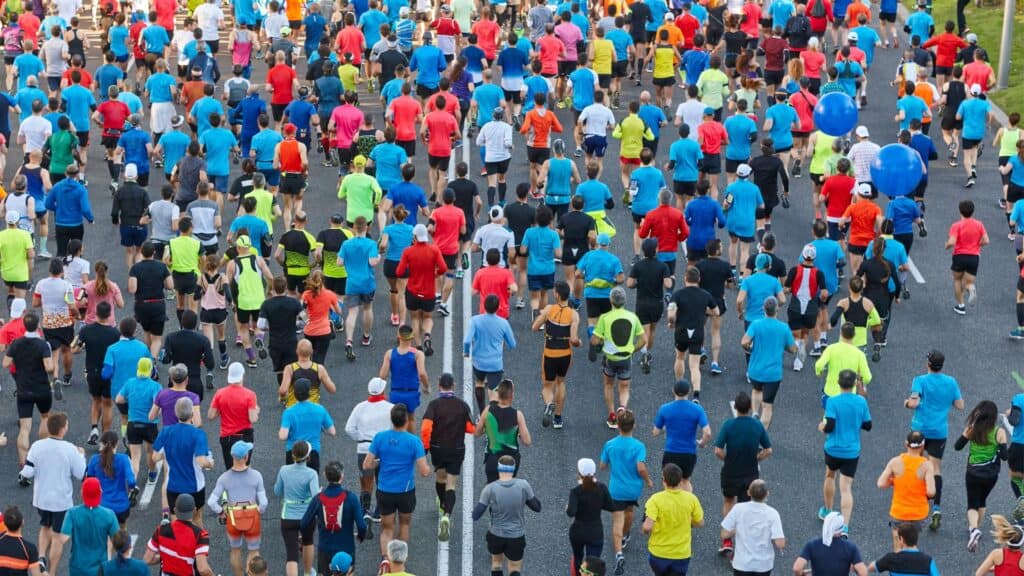
How Do You Qualify And Register For Each Marathon Major Race?
Every World Marathon Major establishes its own set of criteria for qualification. If you don’t meet these standards, there are alternative ways to secure a bib.
All races offer a random lottery, giving participants a chance to be selected. Another option is running with a charity partner, although this often involves reaching a fundraising minimum, which varies for each race.
- Tokyo Marathon
Registration for the Tokyo Marathon typically opens in August. The majority of runners register through the General Entry, which is the most common way to enter the Tokyo Marathon.
You must complete the race within 6 hours and 30 minutes. For this category, you need to enter a lottery or ballot system for a chance to secure a spot. It’s important to note that entry into this category is highly competitive, and there is no guarantee of being selected.
If you’re a fast runner, you can look at the “semi-elite entry,” known as the Run As One program for international participants.
To qualify, you must achieve specified times in events with the World Athletics Label, the World Athletics Elite Label, or the World Athletics Elite Platinum Label. The qualifying time for men is a marathon finish faster than 2:32:00, and for women, it’s 3:19:00. While there are no age groups, preference is given to faster runners applying through this program.
Related: How To Enter The Tokyo Marathon: Cost & Who Can
- Boston Marathon
Qualifying for the Boston Marathon is a goal that many runners strive to achieve, but it requires meeting specific time standards based on age and gender.
The Boston Athletic Association (BAA) establishes these standards to ensure that the race field remains competitive and challenging.
To qualify, you must achieve the time standards set by the BAA, which are based on your age on the day of the race. These times must be achieved on a certified course approved by the U.S. Track and Field Association or international equivalents recognized by the BAA.
Priority registration is given to the fastest runners, and if the number of qualified applicants exceeds the field size limit, an even faster time is required to secure a spot.
The qualifying times serve as the initial step towards participating in the elite race, and you can find the specific times for each age group on the BAA website.
To determine the qualifying times for your age group and review the cut-off times from previous years, please refer to the list provided below.
| Age Group | MEN | WOMEN |
| 18-34 | 3hrs 00min 00sec | 3hrs 30min 00sec |
| 35-39 | 3hrs 05min 00sec | 3hrs 35min 00sec |
| 40-44 | 3hrs 10min 00sec | 3hrs 40min 00sec |
| 45-49 | 3hrs 20min 00sec | 3hrs 50min 00sec |
| 50-54 | 3hrs 25min 00sec | 3hrs 55min 00sec |
| 50-54 | 3hrs 25min 00sec | 3hrs 55min 00sec |
| 55-59 | 3hrs 35min 00sec | 4hrs 05min 00sec |
| 60-64 | 3hrs 50min 00sec | 4hrs 20min 00sec |
| 65-69 | 4hrs 05min 00sec | 4hrs 35min 00sec |
| 70-74 | 4hrs 20min 00sec | 4hrs 50min 00sec |
| 75-79 | 4hrs 35min 00sec | 5hrs 05min 00sec |
| 80 and over | 4hrs 50min 00sec | 5hrs 20min 00sec |
Related: How To Enter Boston Marathon 2026: Cost, How, & Who can
- Berlin Marathon
To secure a spot at the start line of the Berlin Marathon, you have four options:
- AIMS-Certified Fast Runner
Runners who meet specific fast-running criteria certified by the Association of International Marathons and Distance Races (AIMS) may secure a spot based on their qualifying times.
It’s important to note that qualifying times for entry may vary based on age groups for both men and women.
| Age | 18-44 years old | 44-59 years old | 60+ years old |
| Man | 2:45 hours | 2:55 hours | 3:25 hours |
| Women | 3:00 hours | 3:20 hours. | 4:10 hours |
- Through Charity Partners
You can choose to run for a charity partner associated with the marathon. In this option, runners commit to raising a certain amount of funds for the chosen charity to secure their entry.
Some of these charity partners include:
- GET KIDS GOING!
- i-MED Vision
- Realbuzz Group Ltd
- Björn Schulz Stiftung
- Stiftung KinderHerz
- Achilles International Germany
- Imagine for Margo – Children without Cancer
For a comprehensive and up-to-date list, please refer to the official BMW Berlin Marathon website.
- Through Tour Operators:
You can also secure a bib by joining a tour group or operator specializing in marathon travel arrangements. These operators often provide guaranteed entry as part of a package that includes logistics and accommodations.
Choosing a tour operator package offers a notable benefit: access to race entries even after the general lottery drawing has concluded. This means that participants who were unsuccessful in securing a spot through the lottery still have an opportunity to take part in the marathon.
Some of the tour partners include:
- Runners Unlimited by Ruefa
- Marathon Tours & Travel
- 2:09 Events Ltd
- Sports Tours International
- Running Crazy Ltd.
- Swinley Travel Ltd
Please visit the official BMW Berlin Marathon website to see the full list of tour operators.
- Lottery System
To enter the lottery for the marathon, applicants can apply online within the designated registration period, typically from September 29 to November 17 of the preceding year.
The selection process is random, and being chosen is not guaranteed. You can register as an individual or part of a team (2-3 people), with all team members receiving a marathon entry if selected. There is no team ranking in the race.
There is no fee to enter the lottery, and only winners will be required to pay the marathon entry fee of €163. Each person can submit only one application, either as an individual or part of a team. Notifications about entry status will be sent via email on December 1 of the preceding year.
Related: Qualifying For Berlin Marathon: Everything You Need To Know
4. London
There are seven ways to enter the London Marathon:
1. Ballot Entry
2. Good For Age
3. Charity
4. Running Club Places
5. Abbot Lottery
6. International Tour Operators
7. Championship Place
For the majority of runners, these are the most common ways to secure a bib for the London Marathon: London Marathon Entries: Ballot, Good For Age & Charity
For a championship entry, qualifying performances in a marathon or half marathon must be achieved at an event with a UKA-certified course. You need to be registered with your national governing body (England Athletics, Scotland Athletics, Welsh Athletics, or Athletics Northern Ireland). Meeting the qualifying criteria guarantees a place, with proof of performance and UKA membership required.
This option is available for both UK and international participants. Applicants can also qualify through the virtual TCS London Marathon but must provide evidence of an ‘in-person’ half marathon time meeting the specified criteria.
| Full Marathon | Half Marathon | |
| Men | sub 2:40:00 | sub 1:12:30 |
| Women | sub 3:14:00 | sub 1:28:00 |
The Good For Age (GFA) entry for the London Marathon is exclusive to UK residents, requiring runners to achieve specific qualifying times based on their age.
While the qualifying times become faster each year, they slow down as the participant’s age increases. The allocation of places is not guaranteed and is based on the fastest runners being selected first.
For the London Marathon, there are 6,000 GFA places equally divided between men and women. It’s advisable to enter both the GFA and ballot entries to increase your chances of securing a spot. If successful in obtaining a GFA entry, the ballot application will be withdrawn.
Qualifying times for the London Marathon, achieved between October and September, vary based on age. Applicants must have achieved the relevant qualifying time to be eligible.
| Age | Men | Women |
| 18- 39 | sub 3:00:00 | sub 3:45:00 |
| 40- 44 | sub 3:05:00 | sub 3:50:00 |
| 45- 49 | sub 3:10:00 | sub 3:53:00 |
| 50- 54 | sub 3:15:00 | sub 4:00:00 |
| 55- 59 | sub 3:20:00 | sub 4:05:00 |
| 60- 64 | sub 3:45:00 | sub 4:30:00 |
| 65- 69 | sub 4:00:00 | sub 5:00:00 |
| 70- 74 | sub 5:00:00 | sub 6:00:00 |
| 75- 79 | sub 5:15:00 | sub 6:20:00 |
| 80- 84 | sub 5:30:00 | sub 6:40:00 |
| 85+ | sub 6:10:00 | sub 7:10:00 |
5. New York City Marathon
To qualify for the NYC Marathon, you must achieve specific time standards based on age and gender categories in a certified marathon.
The qualifying time standards vary across participant gender and age groups, reflecting the diverse range of participants in the event.
Age | Marathon | Half Marathon | ||
| Men | Women | Men | Women | |
| 18- 34 | 2:53:00 | 3:13:00 | 1:21:00 | 1:32:00 |
| 35-39 | 2:55:00 | 3:15:00 | 1:23:00 | 1:34:00 |
| 40-44 | 2:58:00 | 3:26:00 | 1:25:00 | 1:37:00 |
| 45- 49 | 3:05:00 | 3:38:00 | 1:28:00 | 1:42:00 |
| 50- 54 | 3:14:00 | 3:51:00 | 1:32:00 | 1:49:00 |
| 55- 59 | 3:23:00 | 4:10:00 | 1:36:00 | 1:54:00 |
| 60- 64 | 3:34:00 | 4:27:00 | 1:41:00 | 2:02:00 |
| 65- 69 | 3:45:00 | 4:50:00 | 1:46:00 | 2:12:00 |
| 70- 74 | 4:10:00 | 5:30:00 | 1:57:00 | 2:27:00 |
| 75- 79 | 4:30:00 | 6:00:00 | 2:07:00 | 2:40:00 |
| 80+ | 4:55:00 | 6:35:00 | 2:15:00 | 2:50:00 |
The challenging qualifying times for the NYC Marathon make securing a spot more difficult. However, there are more ways to gain entry to the New York City Marathon aside from time qualifications. Read on to learn more: “How To Qualify For The NYC Marathon: The Complete Guide.“
6. Chicago Marathon
To secure a spot in the Bank of America Chicago Marathon, meeting the established qualifying times is one of the many ways available.
As one of the Six World Marathon Majors, renowned for its fast and flat course ideal for personal and world records, the Chicago Marathon attracts over 40,000 participants annually.
This highlights the competitiveness of gaining entry to this prestigious event, where you have the opportunity to run alongside elite runners.
By meeting the marathon’s qualifying criteria, outlined below, you can confidently secure a guaranteed position as a time qualifier.
| Age | Men | Women | Binary |
| 16 – 29 | 3:05:00 | 3:35:00 | 3:35:00 |
| 30 – 39 | 3:10:00 | 3:40:00 | 3:40:00 |
| 40 – 49 | 3:20:00 | 3:50:00 | 3:50:00 |
| 50 – 59 | 3:35:00 | 4:20:00 | 4:20:00 |
| 60 – 69 | 4:00:00 | 5:00:00 | 5:00:00 |
| 70 – 79 | 4:30:00 | 5:55:00 | 5:55:00 |
| 80 and Over | 5:25:00 | 6:10:00 | 6:10:00 |
Marathon runners know that each race offers its own unique challenges and rewards. This is especially true for the six Marathon Majors. But what sets each marathon apart from the others?
For the races that have an option for a qualifying time that you are capable of, I try to get into the harder lotteries (Tokyo and London) and then use the Major I am doing to try to run a qualifier for the next one I plan to do.
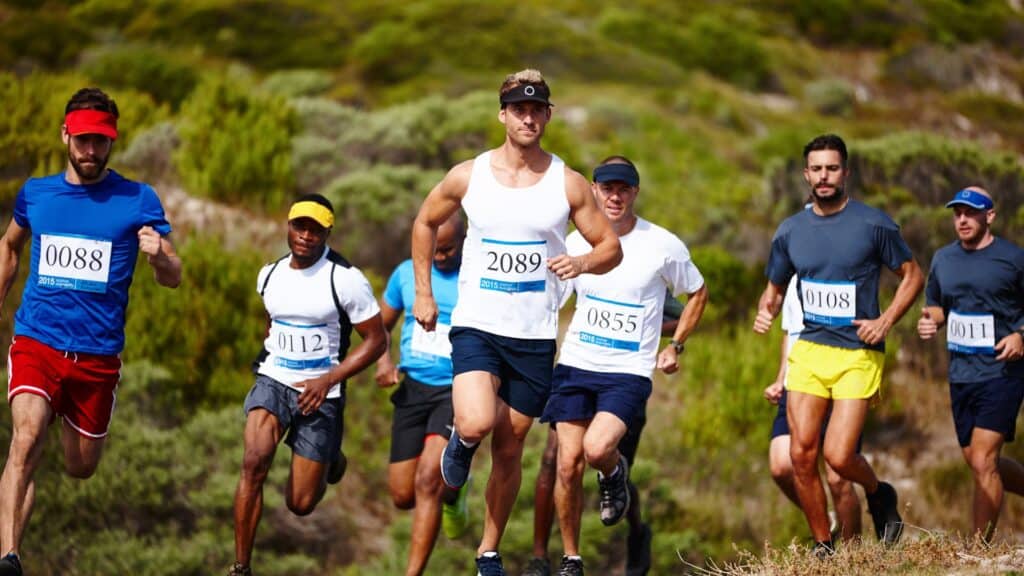
A Closer Look At The Course Description For Each Marathon Major
Tokyo Marathon
The Tokyo Marathon starts at the Tokyo Metropolitan Government Building in Shinjuku, a notable landmark. The course then leads to Suidobashi, known for the Tokyo Dome and Tokyo Dome City. Be cautious around the rail in Suidobashi.
At Sudacho, the first “out and back” section begins, covering approximately 10 km (6.2 miles), with a turnaround at Ueno-hirokoji near Ueno Park. After reaching Sudacho again, the course proceeds through Kanda, known for its traditional style and historic bookstores, and then to Nihombashi, an iconic bridge.
The 10.7km (6.6 miles) finish line is at Nihombashi, marking the starting point of the second “out and back” section with additional segments before returning to Nihombashi. The route continues to Asakusa, where the third out-and-back segment starts at Kuramae 1-Chome and turns back at Kaminarimon Gate, Senso-ji Temple’s outer gate.
Moving forward, runners pass Ryogoku, known for sumo wrestling, and Monzen-nakacho, blending traditional culture with modern attractions. The course then goes through Ginza, a prestigious shopping district, crossing the rail at 35 km (21.7 miles). point.
The last out-and-back segment in Daiichi Keihin leads to the final 4.5 km (2.8 miles) stretch in Hibiya, known as Hibiya Park. The marathon finishes at Tokyo Station or Gyoko-Dori Ave, offering a journey through Tokyo’s landmarks and vibrant urban landscapes.
Boston Marathon
The Boston Marathon Route covers 26.2 miles (42.2 km) from Hopkinton, Massachusetts, to Boston. It has a net elevation loss of 459 feet (140m), starting at the highest point and finishing at the lowest point.
The race begins with a downhill section, but there’s a slight uphill at around 800m (2625 ft), which is challenging. Despite this, the first 400m (1312 ft) is exhilarating as you tear down the hill.
Try hard not to get swept up in this very fast start. While this is a net downhill Marathon, the Newtons between 25 and 35km provide one of the hardest challenges in the 6-star series.
As the second mile (3.2 km) begins towards Ashland, the frenzy of the first mile (1.6 km) subsides. The downhill pitch evens out, crowds thin, and runners spread out. Ashland, once the starting line, is lively with cheering crowds and some rolling hills but a net descent. Keep an eye out for TJ’s Food and Spirits for support.
The third mile features recognizable logos and a transition from rural to commercial scenery. Look for the clock tower at Union and Chestnut Streets, a notable landmark.
At the 4.8-mile (7.7 km) mark, you will enter Framingham. This mile is characterized by three minor rolling hills with a net descent. As you proceed, you will notice a transition in the landscape to an industrial atmosphere. Be cautious as you descend downhill entering the town, and exercise care when crossing the tracks, and passing the Framingham Train Station.
When you reach around 7.3 miles (11.7 km), you will cross into Natick and encounter a short uphill climb. During this stretch, you will pass by Wendy’s, West Natick train station, and the 8-mile (12.9 km) marker.
The 8-mile (12.9 km) marker begins with a slight climb past some office buildings, Planet Fitness gym, and a car dealership. It’s a mostly flat mile overall.
This stretch is relatively quiet, with train tracks on the left and Lake Cochichuate on the right. As you continue, you’ll enter a historic district, which is a change from the commercial and industrial landscapes you’ve seen so far.
Pass significant landmarks and crowds at Natick Center at the 8.8-mile (14.2 km) mark. The route goes uphill at the start and then rolls downhill until almost the 12-mile (19.3 km) mark. The last half is quiet, surrounded by thick woods on the right side.
Next up is Wellesley College, known for the famous Wellesley College screaming tunnel.
As you pass the 20-km (12.4-mile) mark, you’ll climb to Wellesley Center. Here you’ll find a lively downtown area surrounded by pleasant surroundings. This should boost your morale as you reach the halfway point. On your right, you’ll see tennis courts and athletic fields, while a quaint commercial district is also along the way.
The start of the climb offers a lovely residential area with nice stone buildings. You’ll then transition to a more challenging section.
You’ll descend into Newton Lower Falls for half a mile (800m), followed by a challenging uphill climb. You will pass Newton Wellesley Hospital before reaching the 17-mile (27.4-km) marker. After that, the route becomes mountainous, and you will approach the base of Heartbreak Hill; a steep half-mile uphill section that will test your strength and stamina.
As you near the conclusion of mile 21 (33.8 km), you will enter the territory of Boston College.
The Boston College domain takes you through the Cleveland Circle and Brookline neighborhoods. Be mindful of the Green Line trolley tracks and cross multiple sets as you make your way through Washington Square.
In Coolidge Corner, look out for Boston’s Citgo sign, and at the 24-mile (38.6 km) mark, you’ll be near the finish line. The final mile of the route offers a view of Fenway Park and takes you past landmarks before turning left onto Boylston Street. The finish line is located before Dartmouth Street, close to the Boston Public Library and Copley Square.
Berlin Marathon
The Berlin Marathon Route covers 26.2 miles (42.2 km), starting and finishing at the iconic Brandenburg Gate. The initial miles lead through the city center, passing landmarks like the Berliner Dom and the Reichstag building.
After the 5km (3.11-mile) mark, you enter the western part, Charlottenburg, featuring inclines, requiring strategic pacing and energy conservation.
Approaching the 15km (9.32-mile) mark in the Berlin Marathon, you enter the “Berlin Wall” area, offering a unique opportunity to immerse yourself in Berlin’s history. Take moments to observe the ground as the roads are paved over the former Berlin Wall, providing a poignant experience as you run over a significant border filled with history.
The midpoint of the Berlin Marathon is denoted by a turnaround after crossing the iconic Oberbaumbrücke Bridge. Heading back towards the city center in the east, the next miles will take you through some of Berlin’s vibrant neighborhoods.
The energetic crowds in this section can serve as a significant motivational boost, prompting you to harness that energy while maintaining your pace.
Approaching the final stretch of the race, runners pass through the famous Potsdamer Platz and enter Tiergarten Park. This phase often sees fatigue setting in, requiring runners to summon their resilience and fine-tune their endgame strategy for the remaining miles.
With only a few kilometers left, the route leads back to the city center, revisiting Brandenburg Gate before reaching the ultimate finish line.
London Marathon
The London Marathon route features closed-off roads and pavements with a total elevation gain ranging from 119m to 138m (390ft to 453ft). It is primarily a flat course, with only one small rise. The marathon commences with a triple start, categorized by different colors and number of zones. The three start points are as follows:
- Red: Southern Greenwich Park.
- Green: St John’s Park.
- Blue: Shooter’s Hill Road.
Within each start area (Red, Green, Blue), there are eight zones numbered 1 to 8. You will receive information about your designated Start Zone during the registration process at the Expo.
The first three miles (4.8 km) guide runners from the leafy start line in Blackheath through Charlton. Whether starting from the red start line, St Johns Park, or Shooter’s Hill Road, all runners converge onto the same course at mile 3 (4.8 km).
The route continues through Woolwich and Westcombe Park, with mile six (9.7km) marking entry into Greenwich on Trafalgar Road. Mile 7 (11.3km) of the race showcases the famous Cutty Sark, leading the runners towards Deptford and Surrey Quay at mile 9 (14.5 km). This is where the first Lucozade Sports Drink table is. Prepare for a wall of sound as this is one of 2 of the loudest points on the route.
You will follow the Thames closely in mile 10 (16km), and at mile 11 (17.7km), you come across the Tower Bridge. A wall of sound that gets the adrenaline pumping and can lead to you pushing too hard too early in the race. After crossing the bridge towards the Tower of London, you reach the halfway point shortly after mile 13 (20.9km). Heading toward Narrow Street at mile 16 (25.7 km), you’ll descend to Crossharbour and Mudchute.
Progressing through the lively Limehouse, you return to the city along the highway. As the finish line nears, you’ll trace the Thames along the Victoria Embankment, passing landmarks, Westminster, and concluding the race in St James Park.
New York City Marathon
The first mile (1.6 km) involves a challenging uphill climb, followed by a downhill stretch in the second mile (3.2 km) as runners transition off the Verrazano-Narrows Bridge into Brooklyn. The New York Marathon’s crowd support becomes a spectacle at this point and remains consistently lively throughout the race.
The next 11 miles (18 km) of the marathon present a relatively flat course, guiding you through various neighborhoods in Brooklyn, including Williamsburg, Greenpoint, and Bedford-Stuyvesant. The route provides a vibrant backdrop of energetic spectators and street culture.
This relatively flat section is marked by a vibrant race atmosphere, but it’s crucial to maintain pacing and adhere to your fueling strategy, as challenges lie ahead—the hills.
At 13.1 miles (21.1 km), you hit the halfway mark after crossing the Pulaski Bridge, entering Long Island City, Queens, for the next 2 miles (3.2 km).
Mile 14 (22.5 km) brings runners to the scenic yet steep Queensboro Bridge. The subsequent miles, 16 to 18 (25.7 km to 29km), include one of the toughest stretches in the New York City Marathon—the ascent up Queensboro Bridge.
This section lacks crowd support, a significant contrast since Brooklyn, and often marks the point where runners encounter “the wall” in marathons, experiencing a challenging part of the route with the echoing sounds of runners’ feet on the bridge. Like Boston, these bridges provide far more significant challenges than you imagine.
The difficulty is eased by the energetic, vibrant crowds that await you as you reach First Avenue. This is a good spot to meet up with your family or friends that are seconding you as they will still have time to make it to the finish line and you might be looking for some words of encouragement at this point.
Approaching the 20-mile/32km mark just before reentering Manhattan, although the spectator crowds diminish in this section, you can still expect the support of bands and dancers, providing encouragement as you approach the final stretch of the race.
As you head uphill on Fifth Avenue towards the northern edge of the renowned Central Park at mile 23/37 km, the thousands of spectators lining the route will cheer fervently, providing that last surge of energy for the home stretch.
Approaching the last stretch, the next mile is flat, offering a good opportunity to prepare for the final challenging segment of the race.
Miles 24 (38.6 miles), 25 (40.2 miles), and 26.2 (42.2km) guide runners through the unforgettable heart of Central Park before culminating at the finish line near the Tavern on the Green.
The deafening roar of the crowds will drown out any other sounds. Mile 25/40km brings you close to Columbus Circle and over the final hill of the race onto the last stretch.
While this hill may pose a mental challenge, being so near yet feeling far, mentally preparing for it is key. Once you conquer that hill, you’re on your way to completing one of the most iconic marathons in the world, with the finish line in clear view!
Couch to New York City Marathon In ONE YEAR: Training Guide
Chicago Marathon
The first miles of the race guide you through downtown Chicago, surrounded by iconic skyscrapers. Be mindful that tall buildings might occasionally affect GPS signals, so it’s advisable not to rely solely on your device for pacing.
Following the downtown segment, you’ll head north for approximately six miles (9.6 km), passing through diverse neighborhoods like Boystown, Lincoln Park, and Old Town.
The 13.1-mile (21.1-kilometre) mark signifies the halfway point, prompting a change in direction as you embark on the second half of the marathon’s eastern journey.
After mile 21 (33.6 km), you will pass through the vibrant Chinatown neighborhood before returning north to the finish line in Grant Park.
While the Chicago Marathon is celebrated for its flat terrain, there is a minor exception. Just before hitting the 26-mile (41.6 km) mark, you’ll experience a gentle incline as you turn right from Michigan Avenue onto the Roosevelt Road bridge.
Although brief, it’s a climb, and once you reach the crest, you’ll make a left onto Columbus Drive, relishing a downhill stretch of about 300m (0.2 miles) leading to the finish line.
Running a Marathon Major is a big event in any runner’s life. But, finding a place to stay while you’re running a Marathon Major can be a challenge. The good news is that you have options…
Tokyo Marathon Accommodation Close To The Start/Finish Line
- Located near Shinjuku train station, it is an 8-minute walk from the Tokyo Marathon starting point.
- Over 20 dining options with breathtaking city views.
- A 5-star rating ensures top-notch hospitality.
- Comfortable stay in Shinjuku with eager-to-help staff.
- Fabulous 4-star hotel.
- A 25-minute walk from the start or 20 minutes by public transport.
- Situated in the kabuki-cho area, offering a stunning aesthetic look.
- Unique design features and a relaxing, therapeutic ambience.
- 4-star rating, 21 minutes by public transport or 28 minutes on foot from the start.
- Close to important landmarks in Shinjuku, including Tokyo Tower and the Tokyo National Museum.
- Caters to both smokers and non-smokers.
- Affordable 3-star option, 20 minutes walk or 12 minutes by public transportation from the start.
- 3-star hotel near Omoide Yokocho.
- Offers daily accommodation housekeeping.
- Approximately 25 minutes walk or 20 minutes by public transportation to the Tokyo Marathon starting point.
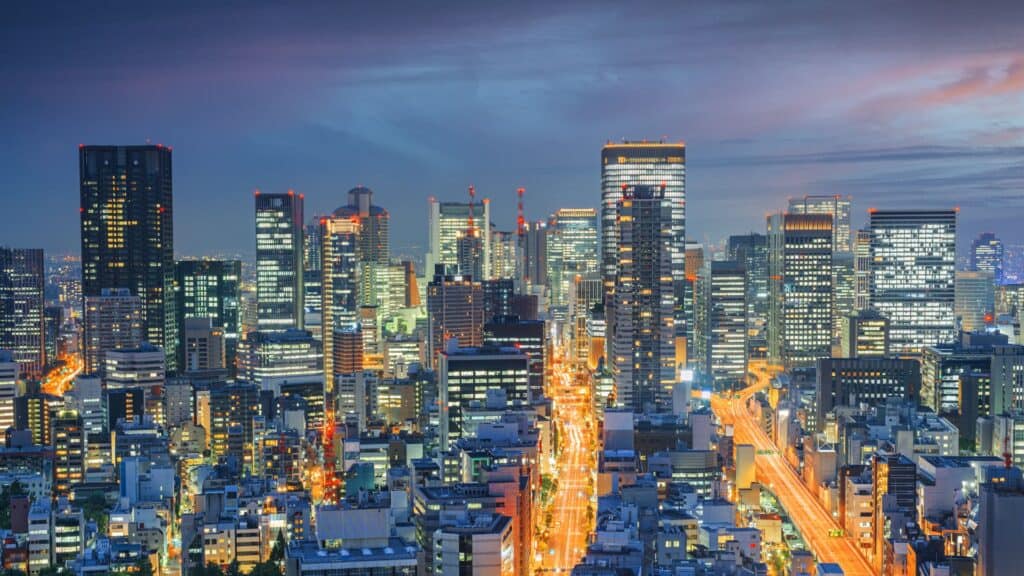
Boston Marathon Accommodation Close To The Start/Finish Line
This New England hotel offers a warm and welcoming atmosphere with amenities like private parking and a fitness center, making it an ideal choice for marathon runners.
Family-friendly and pet-friendly, the hotel provides a satisfying breakfast on race day. Each room is equipped with a microwave and fridge for added convenience. The distance from the start line is 4.9 miles (7.8 km).
There are shuttles to Athletes’ Village from the South Street Parking lot, which is just 8 minutes away by car.
The Hampton Inn Boston in Westborough is conveniently located, just a 12-minute car ride from Hopkinton Center, the starting point of the Boston Marathon.
This highly-rated and budget-friendly hotel is an excellent choice for those driving to the event and wanting to stay close to the start. However, it’s important to note that parking can be limited during the race weekend.
Moreover, it is situated only 10 minutes away from South Street Parking and the shuttle buses that transport runners to the start.
The DoubleTree by Hilton Boston is a conveniently located hotel, just 12 minutes away from the starting line in Hopkinton. This elegant and well-appointed hotel offers beautiful grounds, a dedicated staff, a 24-hour fitness center, and an indoor swimming pool.
Additionally, it is only a 10-minute drive from the South Street Parking lot.
- The Lenox Hotel
The Lenox Hotel, a 4-star hotel, is strategically positioned just before the Finish Line, making it incredibly convenient for both the Expo and Bus Loading areas, which are only 0.3 miles (500m) and 0.7 miles (1.1 km) away, respectively.
The hotel is exceptionally close to the Finish Line itself, at just 0.1 miles (161m) away. For travelers arriving by air, the hotel is a quick 17-minute drive from Logan International Airport (BOS).
Copley Station is conveniently located within a 2-minute walk, providing easy access to explore the city. Additionally, there are various dining options within a 5-minute walk for a satisfying pre-race meal.
- Courtyard Boston Copley Square (3-Star Hotel)
Positioned a block behind the Finish Line, this hotel is in an ideal location just before the finish, offering easy access to key marathon locations. The Expo is 0.3 miles away (0.48 km), the Bus Loading area is 0.7 miles away (1.13 km), and the Finish Line is an incredibly short distance of only 0.1 miles away (0.16 km).
The hotel provides convenient dining options, including a daily full breakfast for a fee of USD 5–20 per person, a restaurant, and coffee/tea in common areas, along with a snack bar/deli.
Transportation is hassle-free with Copley Station a 3-minute walk away, Back Bay Station a 5-minute walk away, and Logan International Airport (BOS) accessible within a 16-minute drive.
To experience the full race atmosphere it is advisable to stay in Boston and ride the buses to the start. Staying near the start is logistically difficult before and after the event.
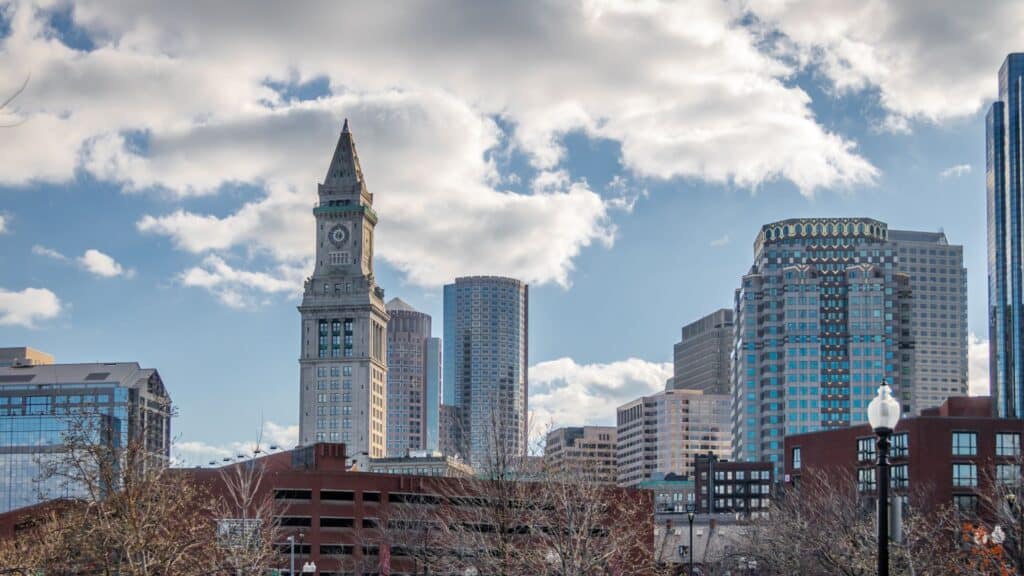
Berlin Marathon Accomodation Close To The Start/Finish Line
- Renowned 5-star hotel near Brandenburg Gate.
- Double Michelin-starred restaurant and shopping arcade.
- 10-15 minute walk to the start/finish line.
- 8 minutes to Expo via U-Bahn U2 Line.
- 15 minutes from the start/finish lines.
- Delicious breakfast buffet 2 minutes away.
- Close to attractions like Potsdamer Platz and Reichstag building.
- Expo access: Gedenkstätte Dt. Widerstand bus stop to Kochstraße, then U6 U-Bahn to U Platz der Luftbrücke.
- Budget-friendly, centrally located in the Mitte district.
- 200 meters from Potsdamer Platz.
- Bright rooms, free WiFi, garden, terrace.
- 15 minutes to start/finish lines, S-Bahn and U-Bahn options are available.
- Expo access: U-Bahn Stadtmitte to U Platz der Luftbrücke.
- Motel One Berlin-Bellevue
- Budget-friendly with air-conditioned rooms.
- 5-minute walk to Bellevue Palace and Tiergarten Park.
- The One Lounge serves as a lobby, bar, and café.
- 15-20 minutes walk to start/finish lines
- Expo access: Bus from Schloss Bellevue to Reichstag/Bundestag, 4 minutes from Brandenburg Gate.
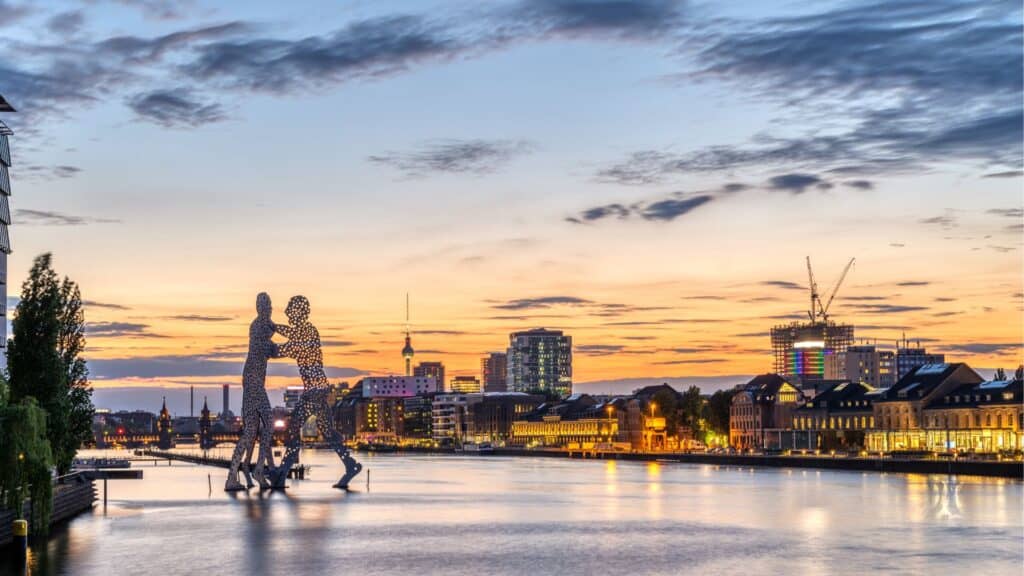
London Marathon Accommodation Close To The Start/Finish Line
- Popular 4-star hotel with restored 1940s architecture.
- Located near the Cutty Sark in Greenwich.
- 3-minute walk to various restaurants.
- 9-minute walk to Greenwich Station for the train to start line.
- Fantastic 4-star hotel in the heart of Greenwich Borough.
- Modern leisure complex with fitness center and steam room.
- A 10-minute walk from Greenwich Park and the Royal Observatory.
- 15-minute drive to Canary Wharf, 5-minute walk to Greenwich Pier.
- 2-minute walk to Greenwich Station for convenient city travel.
- Affordable 3-star hotel overlooking Blackheath and Greenwich Park.
- Quick 15-minute walk to the London Marathon start line.
- Limited parking at the front and back, additional options nearby.
- Electric car charging facilities available.
- Surrounded by bars, restaurants, and boutique shops for a vibrant stay.
- Luxurious 4-star hotel between Buckingham Palace and the Houses of Parliament.
- The blend of history with modern comfort.
- Short stroll to Buckingham Palace, Hyde Park, and Mayfair.
- 2 restaurants, full-service spa, conference suite, and complimentary WiFi.
- Close proximity to key stations: St. James’s Park, Victoria Underground Station, and Victoria Train Station.
- Comfortable 3-star hotel in Westminster, less than a 5-minute walk to historic landmarks.
- Victorian building with a restaurant and complimentary WiFi.
- Traditional pub by Fuller’s on the ground floor.
- Convenient transportation with St. James’s Park and Westminster stops within 0.3 miles (482m).
- Top-notch five-star luxury hotel in London’s West End.
- Occupies a stunningly preserved Neoclassical building.
- Lavish spa, spacious rooms, Michelin Star restaurant (Wild Honey St. James).
- Complimentary WiFi, Sofitel MyBed, turndown service, and Diptyque toiletries.
- Nespresso coffee machine, flat-screen TV, iDock sound system, and a well-stocked minibar.
- Nearby stations are within a quick 5-minute walk.
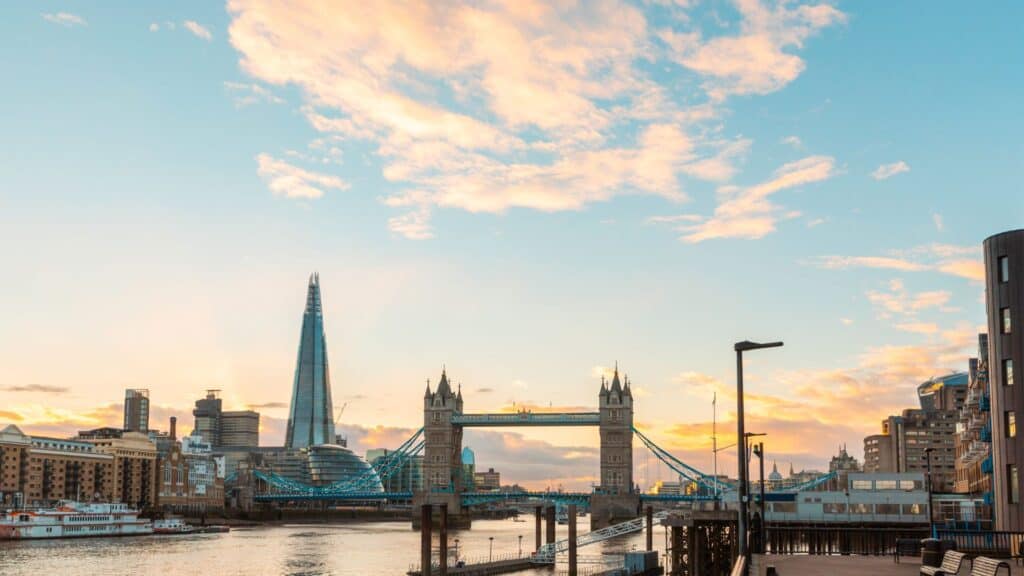
New York City Marathon Accommodation Close To The Start/Finish Line
- Located on the Upper West Side with Times Square just 1 mile away.
- Proximity to the Central Park finish line of the NYC Marathon.
- Rooftop pool, two restaurants, cabanas, and a 4-star rating.
- Elegantly decorated rooms with enclosed glass shower cubicles.
- Lobby bar with rooftop and pool deck service.
- Two blocks away from Central Park and near the Lincoln Center.
- Remarkable hotel on the Upper West Side near Central Park.
- On-site fitness center and spa for a relaxed stay.
- Thoughtfully decorated rooms with a desk and complimentary bath products.
- On-site French restaurant, Nice Matin, with an outdoor terrace.
- It’s 19 minutes away from the NYC Marathon finish line.
- Conveniently located between 77th and 81st St., half a block from the 79th St. Subway station.
- Highly favoured 3-star hotel near cultural attractions, parks, and museums.
- Convenient location for exploring New York after the marathon.
- Advisable to avoid sightseeing activities before the race for optimal preparation.
- Quick two-minute walk to the Central Park finish line and within five minutes of two subway stations.
- Located in Downtown South Manhattan.
- Conveniently near the Herald Square subway and a short walk from the Empire State Building.
- Modern, comfortable rooms with a TV, corner sofa, and fridge.
- Amenities include a gym, a business center, and free Wi-Fi.
- About an 8-minute walk from the Midtown Manhattan bus loading area.
- Charming boutique hotel with a high rating.
- Conveniently close to Midtown Manhattan bus loading, just 3 minutes away.
- American library-style decor, Cable TV, bathrobes, and slippers in rooms.
- Rooftop bar, restaurant, and continental breakfast in the Reading room.
- Emphasis on sticking to your tried-and-tested nutritional plan on race day.
- Murray Hill East Suites
- The fitness center is open 24/7, a short walk from the New York Public Library.
- Self-catering options in rooms with housekeeping twice a week.
- Close to the Chrysler Building, Grand Central Station, and the United Nations headquarters.
- A 14-minute walk to the NY Public Library bus loading area.
- Located on Staten Island, near Mid-Island Interstate 278.
- Comfortable rooms with air conditioning and free parking.
- Close to attractions like the Staten Island Zoo and Heartland Village Centre.
- Distance to Start Line: 14 minutes by car.
- Hampton Inn & Suites Staten Island
- Popular hotel near the Staten Island Industrial Estate.
- Rooms equipped with a TV, coffee facilities, microwave, and fridge.
- On-site laundry and business center.
- Distance to Start Line: 20 minutes by car.
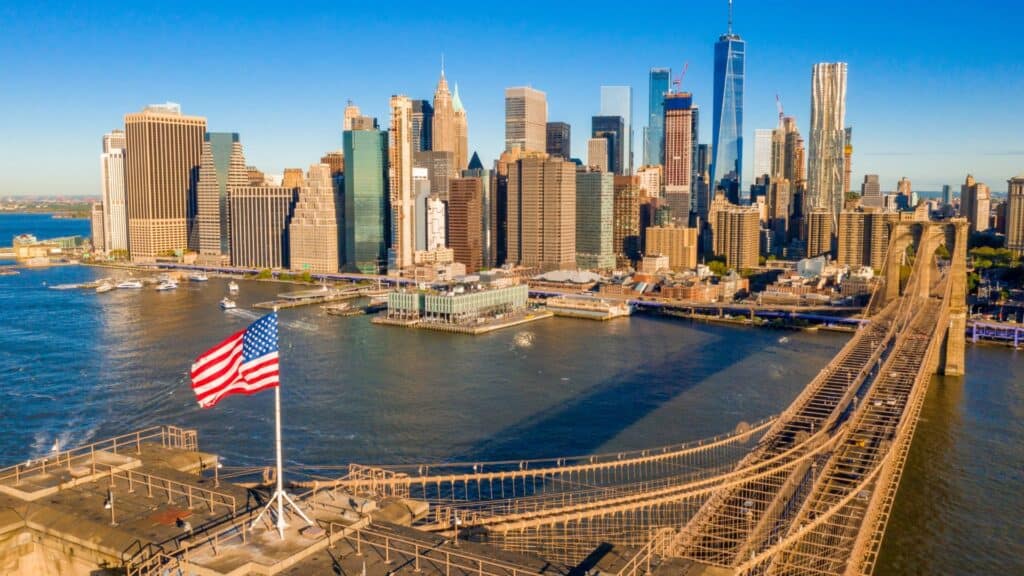
Chicago Marathon Accommodation Close To The Start/Finish Line
- Budget-friendly hotel with stunning views of the lake.
- Conveniently located in the heart of Chicago’s loop.
- Rooms with cable TV, a desk, and a coffee maker.
- A fitness center and business center are available.
- Distance to Start Line: Walking distance.
- Expo Access: 13 minutes by train.
- Hilton Chicago
- 4-star hotel located across the street from Grant Park.
- Facilities include a fitness room, indoor pool, and business center.
- Spacious rooms with AC and a fridge.
- Walking distance to both the start and finish lines.
- Expo Access: Bus and train options are available.
- Congress Plaza Hotel Chicago
- Historic hotel with breathtaking city and lake views.
- On-site dining options, fitness center, and event spaces.
- Rooms blend modern and classic features.
- Conveniently located near the start and finish lines.
- Expo Access: 18 minutes by train.
- Stylish 4-star hotel with impressive views of Grant Park.
- Fitness center, restaurant, and vibrant rooms.
- Great value and proximity to the start and finish lines.
- Expo Access: 15 minutes by train.
- Chicago Athletic Association, a Hyatt Hotel
- A 4-star hotel offering stunning views of Millennium Park.
- Elegant and well-equipped rooms.
- Grand ballroom with 19th-century stained glass windows.
- Walking distance to the start line.
- Expo Access: 18 minutes by train.
- Stylish 4-star boutique hotel near Michigan Avenue.
- Rooftop bar, fitness center, and on-site restaurants.
- Spacious and luxurious rooms.
- Conveniently close to the start and finish lines.
- Expo Access: 18 minutes by train.
- Modern rooms are designed for comfort.
- Services include a concierge, on-site laundry, and room service.
- Proximity to both the start and finish lines.
- Expo Access: 18 minutes by train.
- Luxury hotel with panoramic views of Lake Michigan.
- Indoor and outdoor pools, outdoor track.
- Walking distance to both the start and finish lines.
- Expo Access: Bus and train options are available.
The World Marathon Majors is a once-in-a-lifetime achievement, and completing all six marathons is a significant accomplishment. Each of the races has its unique challenges, experiences, and rewards that make them worth participating in.
Whether you’re a seasoned marathoner or are just starting your running journey, the WMM has something for everyone. So, start planning and training to take on the ultimate running challenge, and see where your dedication and determination can take you.
- New York Marathon Training Plan
- Chicago Marathon Training Plan
- Tokyo Marathon Training Plan
- London Marathon Training Plan
- Berlin Marathon Training Plan
- Boston Marathon Training Plan
This article may contain affiliate links, which means we may earn affiliate income if you make a purchase through these links. This comes at no additional cost to you and helps support the content we provide. We only recommend products or services that we believe offer value to our readers. Your support through these affiliate links is greatly appreciated and allows us to continue delivering valuable information.



Comments are closed.